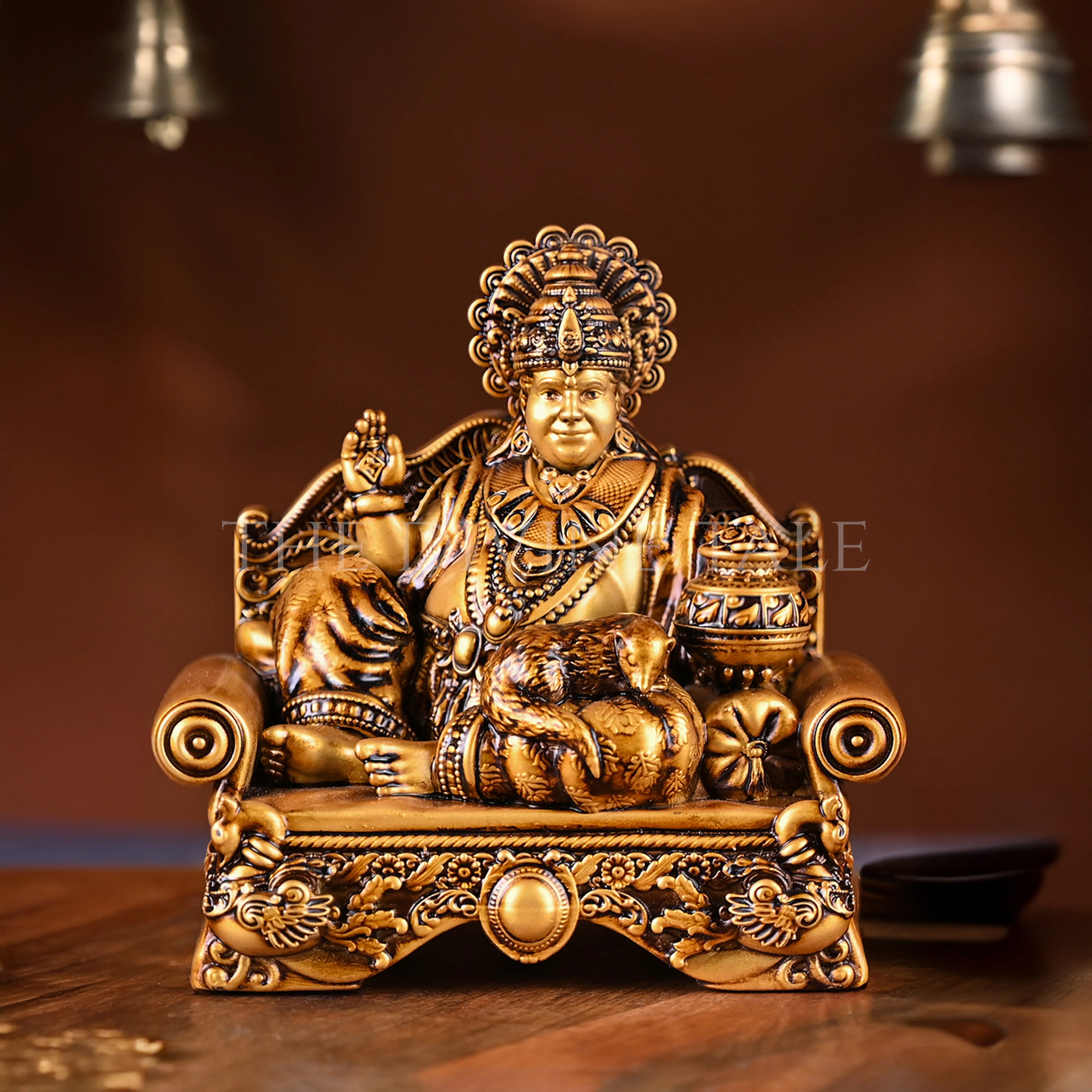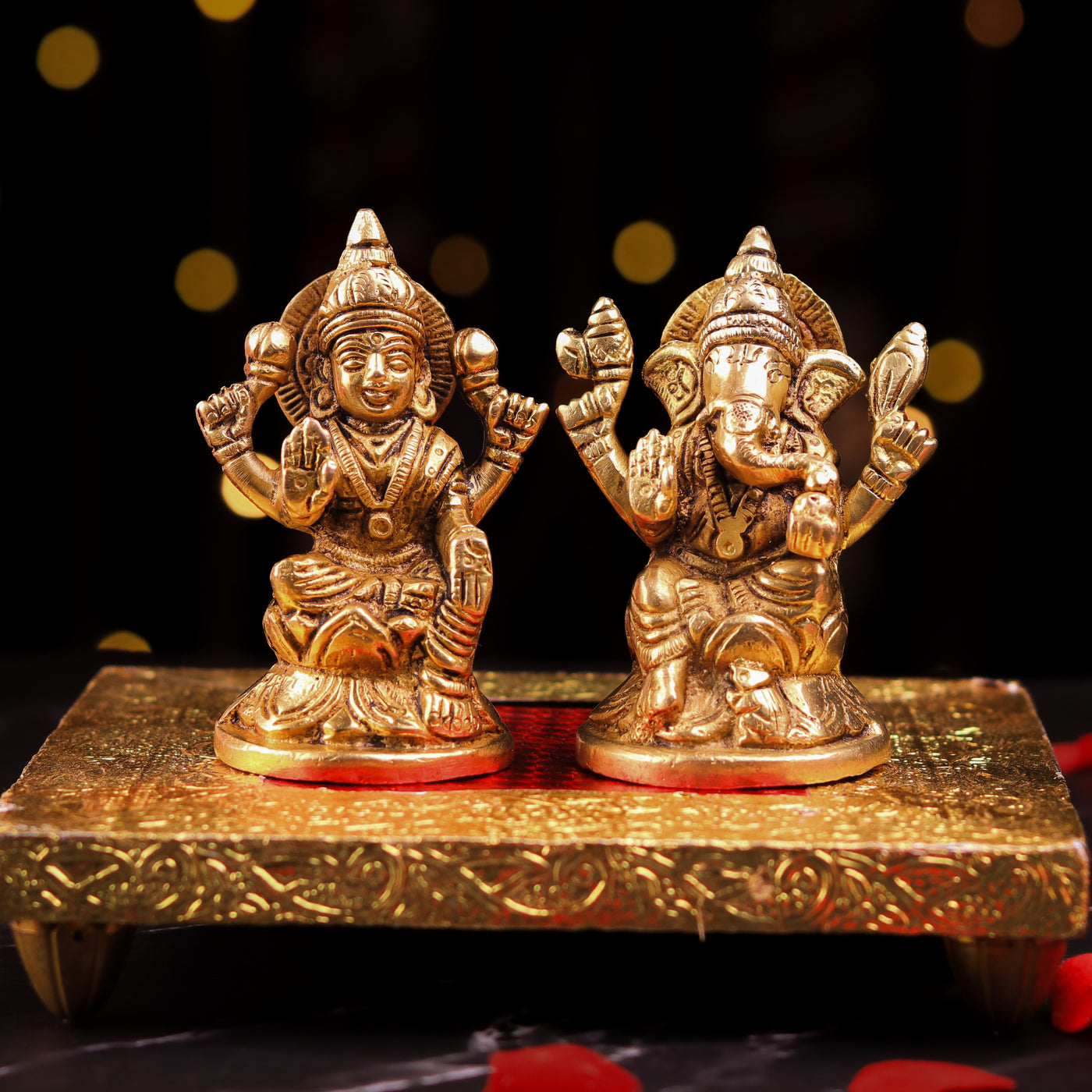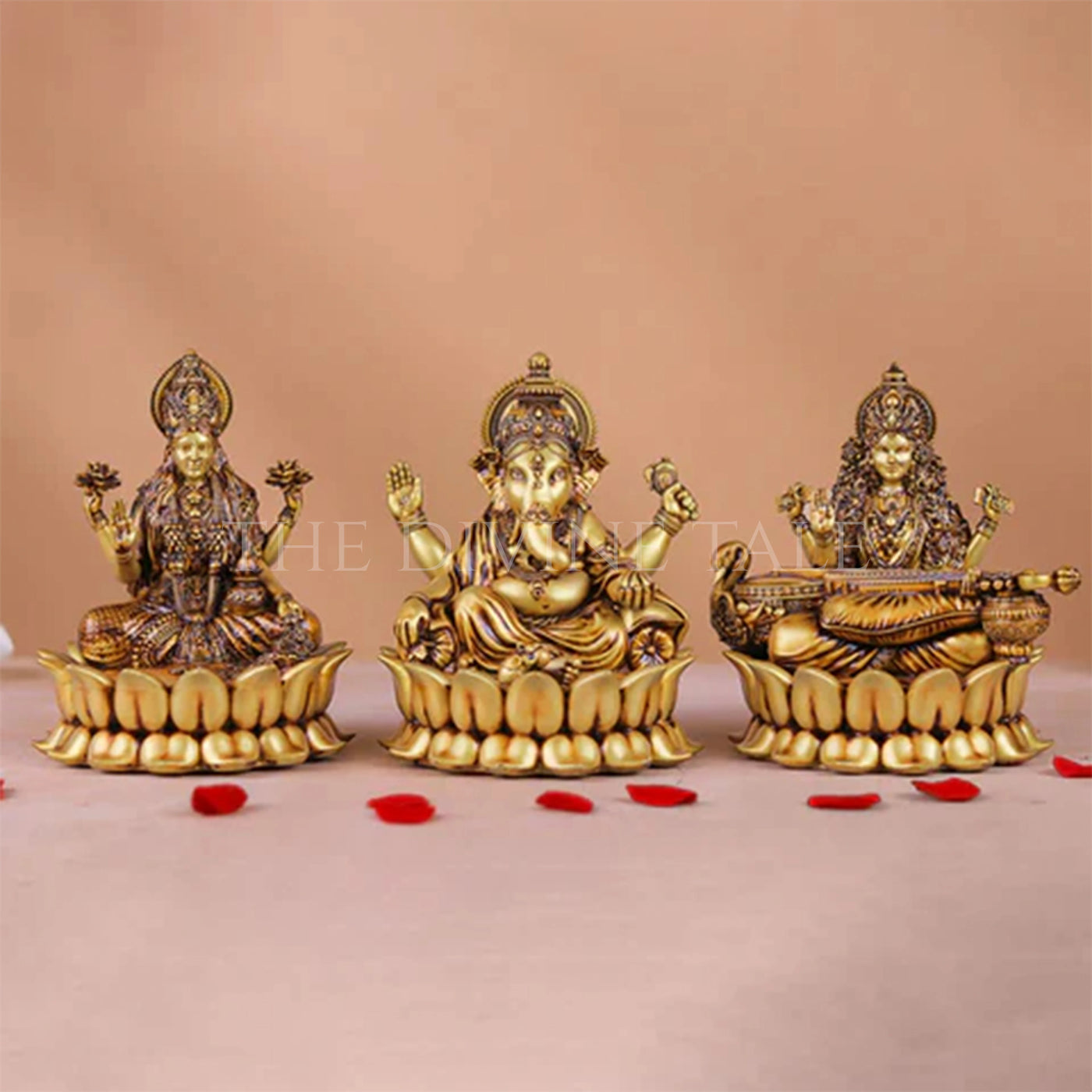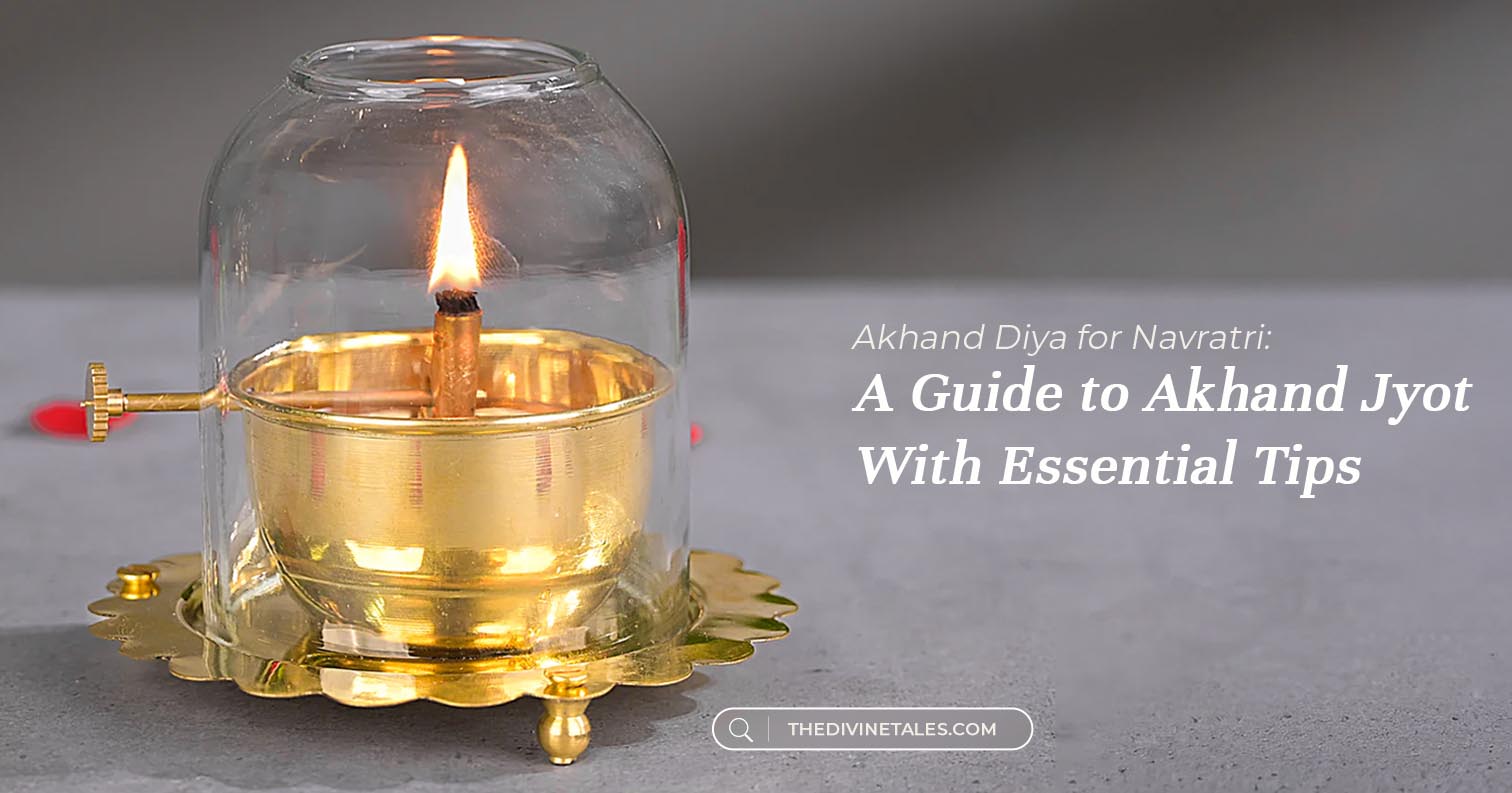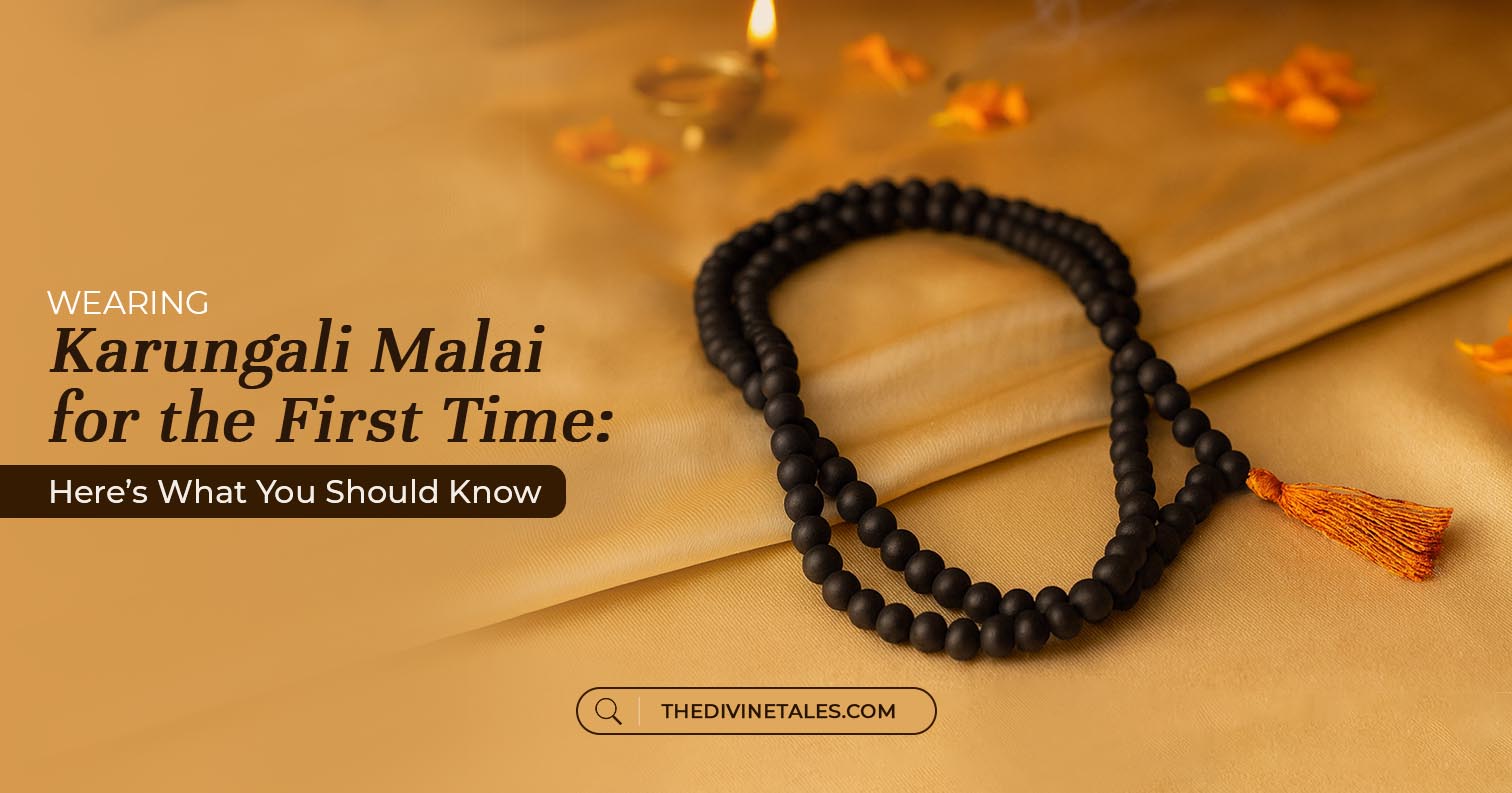Ever noticed how Lord Ganesha’s trunk isn’t always facing the same direction? Sometimes it curves to the left, sometimes to the right, and occasionally, it’s straight. If you’ve ever paused to wonder what these variations mean or found yourself asking which side Ganesha trunk is good for home – you are in the right place.
This blog unpacks the deeper significance behind each trunk position and how it can affect the energy of your space.
Ganesha Trunk Symbolism
Adored, admired, and honored by millions around the world, Lord Ganesha is a very popular deity in the Hindu religion. His presence is said to remove obstacles and bless the lives of devotees with peace and a promising future. This is the reason why you can find his statue in almost every Indian household.
But what makes a Ganesha idol even more special is the symbolism behind the iconography. His trunk is the focal point in each of his iconography - said to destroy obstacles and symbolize change. Also, if you look closely at the idol of Ganesh with right side trunk, it illustrates the symbol Om, the sound of the universe.
So, with such deep symbolism attached to the trunk’s direction, the question naturally arises: which trunk placement should you choose?
Ganesha Trunk on Which Side?
Let’s break down the significance and meaning of different Ganesha trunk directions one by one.
Ganesha Trunk On Left Side Meaning
This is the most common form of Lord Ganesha and is often called Vamamukhi. This particular position of his trunk represents the Northern direction and is often said to be connected to the qualities of the moon – symbolizing peace, joy, material well-being and devotion to Goddess Parvati, mother of Lord Ganesha.
Many devotees prefer this Ganesha trunk direction because it is believed to bring prosperity and cleanse the home of negative energies. It is also thought to correct Vaastu Dosha, or imbalances in architectural energy, making its presence spiritually enriching.
Ganesha Trunk On Right Side Meaning

The idol of Lord Ganesha with a right side trunk, also known as Siddhi Vinayaka or Dakshinabhimukhi, is relatively rare in households and is more commonly found in temples. One of the most well-known examples is the revered Siddhivinayak Temple in Mumbai, where the deity is depicted with his trunk turned to the right.
This form holds special significance. It's believed that Siddhi, one of Ganesha’s consorts symbolizing spiritual power and accomplishment, resides on his right side. Hence, the name Siddhi Vinayaka.
This right-trunk Ganesha is associated with the South direction and signifies the Pingala Nadi or the energy of the sun. Similar to how the sun gives life as well as has the power to take it away, this God idols brings joy if venerated rightly, but if neglected, may even bring the opposite of what you wish for.
One of the major right trunk Ganesha benefits includes the achievement of moksha, that is, the ultimate liberation from the cycle of birth and death.
Straight Ganesh Trunk Meaning

Though this placement of Lord Ganesha’s trunk is pretty rare, it still holds a special meaning. This position is said to hold the balance between the energies of the sun and the moon, symbolizing the opening of the Sushumna Nadi, a central energy channel in the body. It stands as the ultimate state of balance and focus – where everything is in harmony.
Which Side Ganesha Trunk Is Good for Home According to Vastu?

Finally, let’s answer the question: Which side Ganesha trunk is good for home?
According to Vastu, Ganesha murtis with the trunk facing the left are considered more auspicious for home placement. This symbolizes prosperity, happiness, and calmness, while the left side is associated with the moon and its peaceful qualities.
While some believe the right-facing trunk is more powerful, it's also considered difficult to appease and may require stringent rituals.
Lastly, straight trunk Ganesha idols can also be well-suited for households but are often extremely rare to find.
Conclusion
The direction of Ganesha’s trunk is more than just aesthetical placement. It reminds us that whatever you need – whether calm, focus, or liberation from your problems – there is a Ganesha statue to help you achieve that. So, pick the right statue from The Divine Tales, and transform your life and space with divine energy.
Frequently Asked Questions (FAQs):
Q. What does it mean when Ganesh ji’s trunk is on the right side?
A. When Lord Ganesha’s trunk curves to the right, it is considered a more powerful and strict form of the deity, often referred to as Dakshinabhimukhi Ganesha. This direction is associated with the Sun’s energy, symbolizing strength, discipline, and fierce protection.
Q. Which side Lord Ganesha trunk statue should I buy for home?
A. For most households, a left-curved trunk Ganesha is considered ideal. It is called Vamamukhi and is associated with peace, prosperity, and positive energy.
Q. Is it okay to keep the right trunk Ganesha at home?
A. While the right-trunked Ganesha is not forbidden, it is recommended only for those who can follow strict daily rituals and worship practices. Worship of this form requires strict rituals and purity, as it is believed that improper worship may lead to adverse effects instead of blessings.
Q. What are the benefits of left side trunk Ganesha?
A. The left-side trunk Ganesha is associated with the Moon, symbolizing calmness, compassion, and emotional balance. It is believed to:
-
Attract prosperity and abundance
-
Purify the home and correct Vaastu Dosha
-
Promote family harmony and happiness
-
Create an atmosphere of peace and bliss
Q. How should a Ganesha idol be placed at home?
A. When placing a Ganesha idol at home:
-
Face the idol so it looks toward the north, east, or northeast, which are considered auspicious directions.
-
The idol should be placed on a clean platform or altar, ideally at eye level.
-
Avoid placing it near a bathroom or directly on the floor.
-
Keep the space around the idol tidy and light a diya or incense during daily prayers to maintain a spiritually uplifting atmosphere.
Read Also: Jagannath Rath Yatra 2025 | 108 Names of Lord Shiva | Most Powerful Gods in Hinduism


